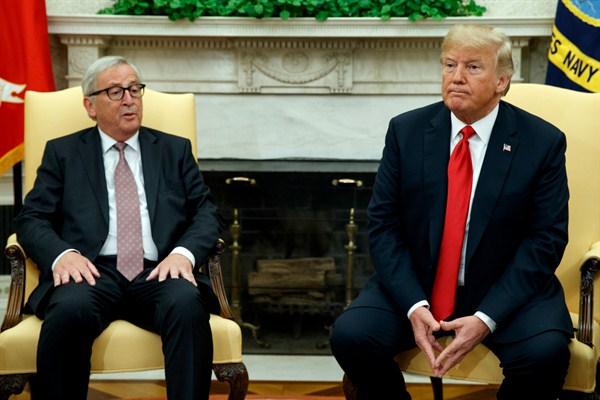Through most of the first two years of Donald Trump’s presidency, there have been competing prisms through which to view the current state of trans-Atlantic relations. Is the glass half-full, or half-empty? Both perspectives still present a fairly grim picture of dysfunction and confusion between the United States and Europe, largely fueled by Trump—featuring interpersonal friction, provocative rhetoric and U.S. policy choices that have upended the established liberal international order.
With the early start of a lengthy U.S. presidential election season, and the possibility of a hard Brexit in March and European parliamentary elections in May that could cause additional disruption, there are several paths the relationship could still take. The likelihood of positive movement over the next two years, however, is slim due to domestic political distractions and leadership weaknesses on both sides of the Atlantic.
The glass half-full analogy, of course, requires a mindset that things could be worse, based on extreme pessimism about how a trans-Atlantic agenda would fit within an “America First” presidency. From the beginning, Trump has been clear about his disdain for Euro-Atlantic institutions, especially NATO and the European Union, and his preference for transactional relationships with America’s strongest allies.

